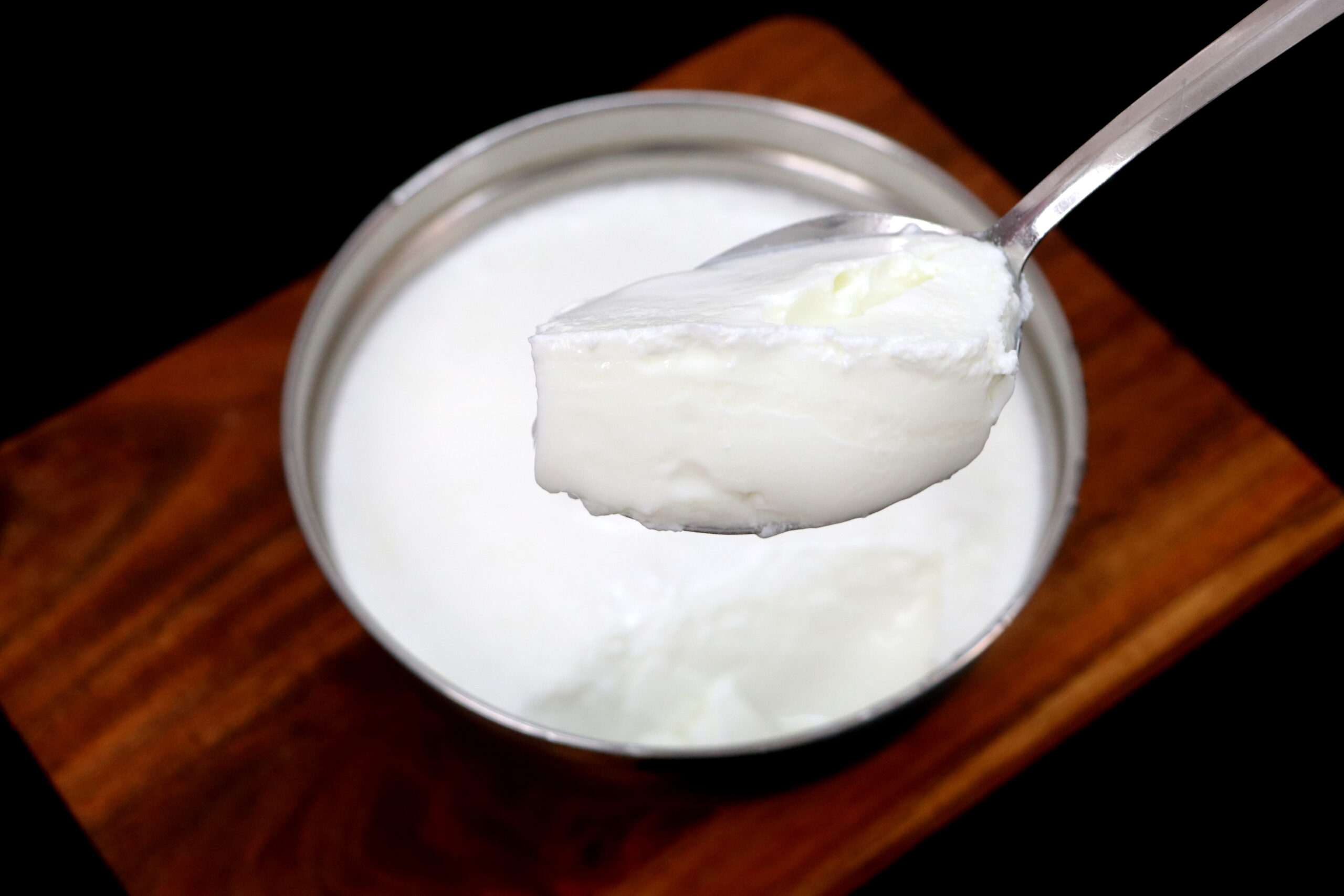Homemade curd recipe
Making curd at home is easier than you think! It’s fresh, creamy, and far better than store bought yogurt. With just a few ingredients and some simple tricks, you can prepare rich, thick curd that tastes like it came from a dairy. Whether you’re using it for lassi, buttermilk, or cooking, this homemade curd is a versatile ingredient that you’ll love having in your fridge. Let’s dive into the process and learn how to make perfect curd every time.
Ingredients
- Milk – 1 liter (full cream milk for the best results)
- Curd – 1 tsp (to use as a starter)

Method
- Firstly, add a little water to the pan before adding the milk to prevent it from burning at the bottom.
- Now pour 1 liter of milk into a pot and bring it to a boil over medium heat. Stir continuously to prevent the milk from sticking to the bottom and to make it creamier. Let it boil for about 15 minutes.
- Once boiled, switch off the flame and let the milk cool until it becomes lukewarm. The ideal temperature is around 45°C (warm to the touch, but not hot). This helps the curd set properly.
- Now take a clean bowl and spread 1 tsp of curd evenly along the bottom and sides. This curd will act as the starter. Pour the lukewarm milk over it and stir gently to mix.
- Cover the bowl and keep it in a warm place for 5-6 hours without disturbing it. During warm weather, the curd will set faster, but in colder climates, it may take longer.
- In winter, place the bowl in a warm spot, like inside a cupboard, casserole, or even a switched-off oven to help the curd set faster.
- Once the curd has set, move it to the refrigerator to cool for 1-2 hours. Chilling it helps the curd firm up even more.
- Finally, our curd is now ready to use! It’s thick, creamy, and perfect for making lassi, buttermilk, or adding to dishes. You can save a couple of spoons of this curd for your next batch.
Tips
- Use full-cream milk for the creamiest, richest curd.
- Don’t disturb the curd while it’s setting to avoid breaking its texture.
- If you live in a cold climate, always keep the curd in a warm spot for better results.



